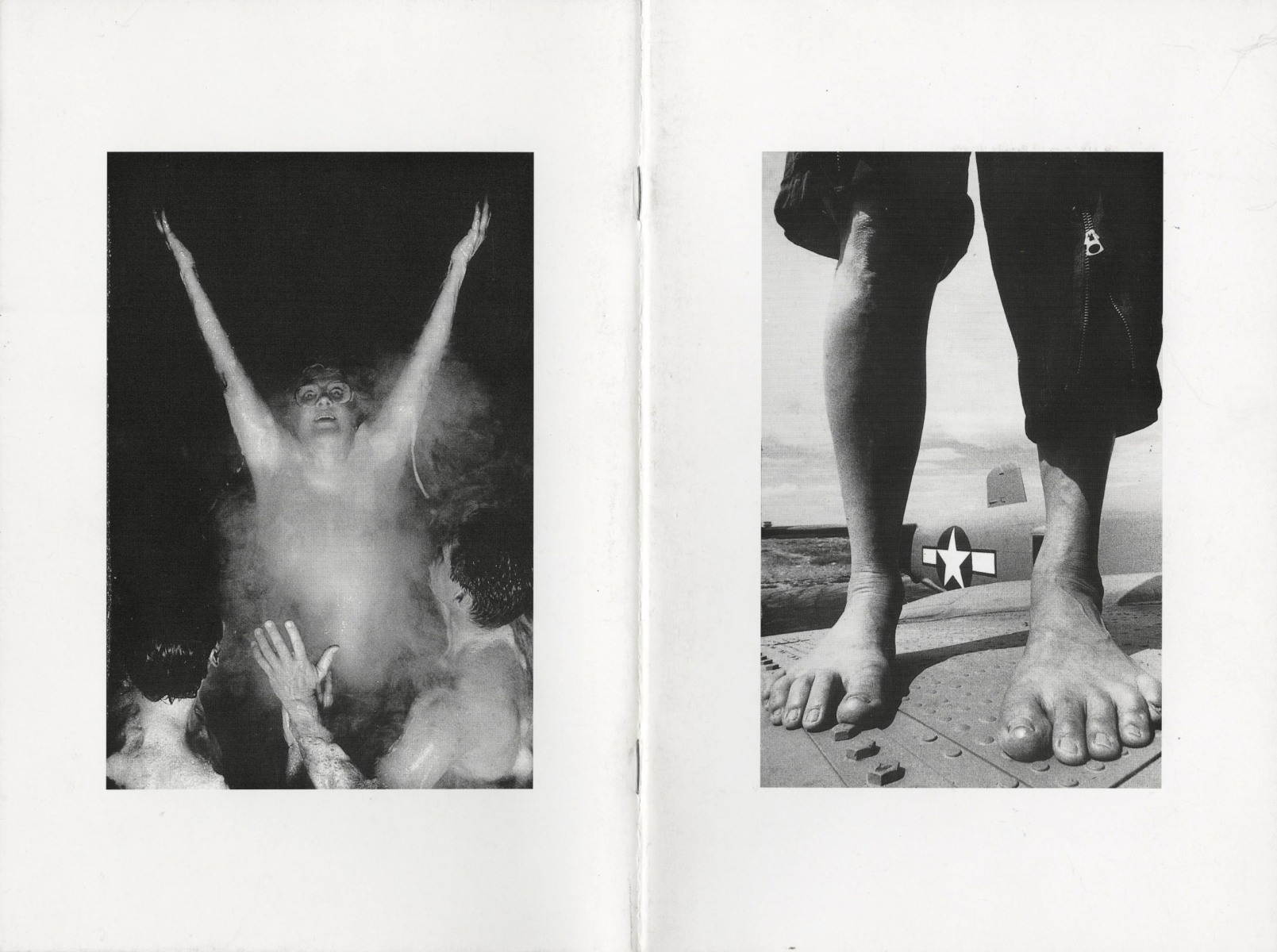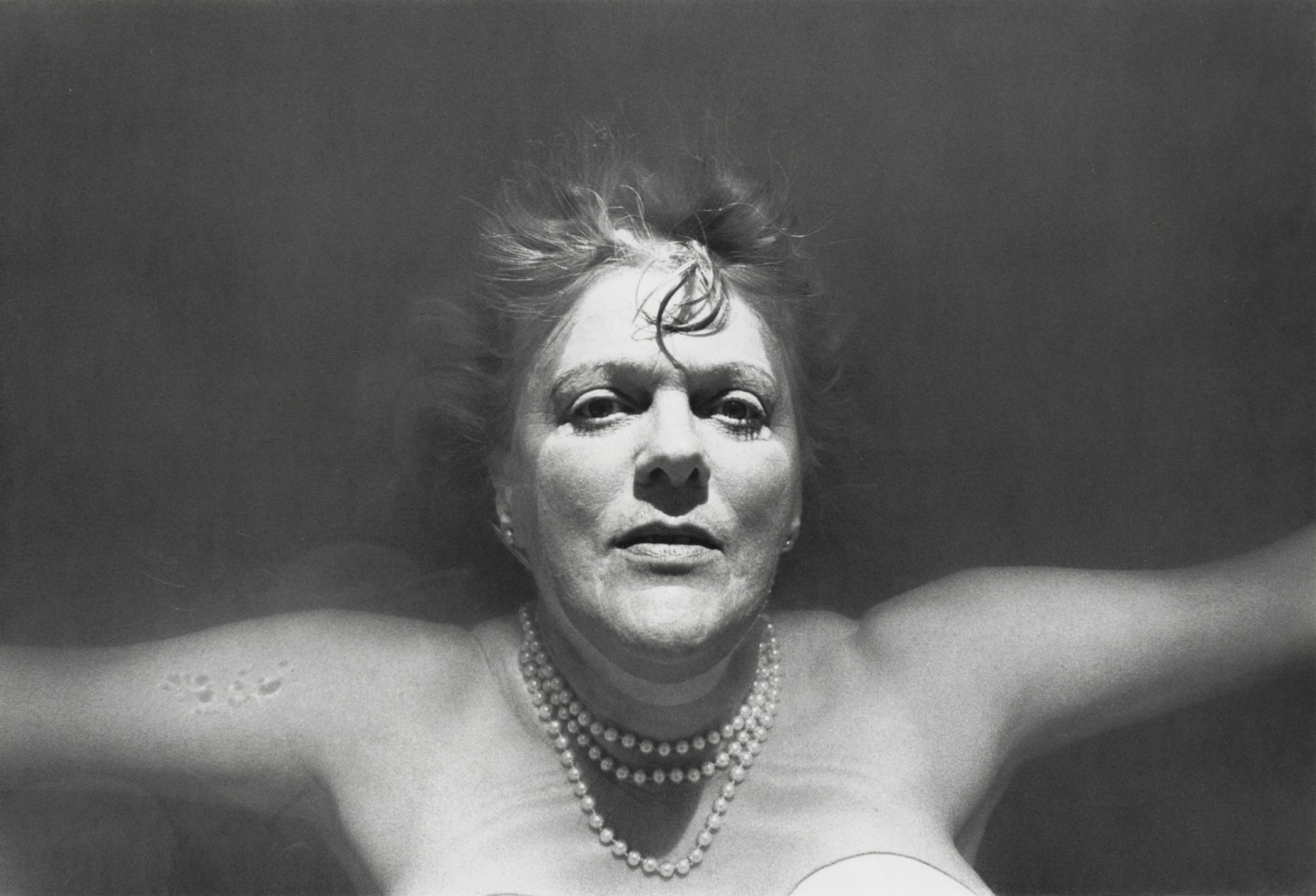From the Archives: Anne Noggle
Written by Joseph McKee, Coordinator of Student Engagement and Technology, and Alejandra Rodriguez, Museum Assistant.
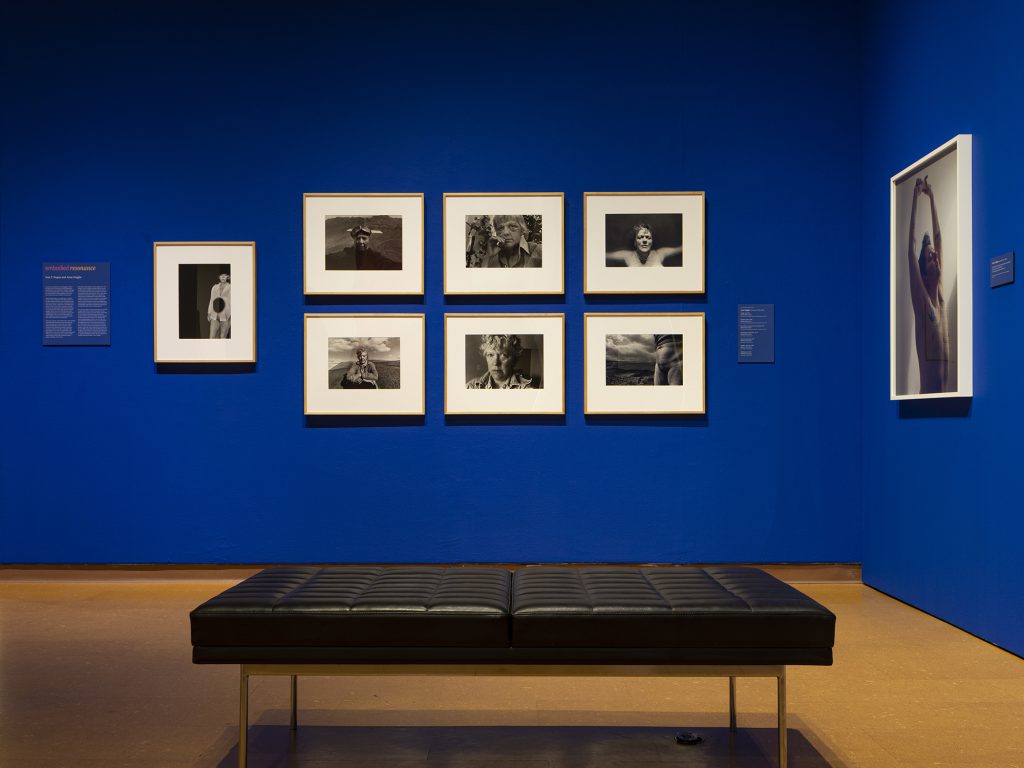
Installation shot of works by Anne Noggle in Embodied Resonance, a section of Hindsight/Insight 2.0. Photograph by Stefan Jennings Batista.
Who was Anne Noggle?
Throughout her life, Anne Noggle (1922 – 2005), held various careers. She was a pilot, a photography instructor, and an artist. Her arrival in discovering her artistry led to an expansive and active career, pushing her self-expression into a powerful oeuvre.
Noggles’s artwork presents to viewers new concepts of self-identity in portraiture. Her artwork explores human connection and challenges the intersecting constructs of gender, aging, and femininity.
Anne Noggle was born in 1922 in Evanston, Illinois, and was raised by her mother, Agnes. Noggle also had an older sister, Mary. Both Mary and Agnes were recurring subjects in Noggle’s large body of work. She entered the United States Air Force in 1943, serving as a Woman Air Force Service Pilot (WASP) until 1944. For the next eight years, Noggle shifted between working as a flight instructor, an air show pilot, and a crop duster. Between 1953 – 1959, she was an intercept controller and an Air Force captain stationed in Paris, France. Here Noggle developed an interest in art and architecture, spending her spare time at the Louvre – a foreshadowing to her later career in art.
Her growing interest in the arts led her to The University of New Mexico in 1960, where she enrolled, earning a BA in Art and Art History in 1966. In 1969, Noggle received her MA in Photography from UNM. After receiving an MA, she went on to work as the Curator of Photography at the Museum of Fine Arts (now known as the New Mexico Museum of Art) until 1976, while also working in the UNM Department of Art as an Adjunct Professor from 1970 to 1996.
Noggle and UNMAM
The UNM Art Museum’s collection holds around 100 photographs by Noggle, 12 of which were on display in Hindsight Insight 2.0. But Noggle’s connection to UNMAM is deeper than the display of her artwork in Hindsight Insight 2.0.
Noggle was involved with UNMAM through several exhibitions, where her artwork was supported by UNMAM curators over the years. Her artworks were shown in at least seven exhibitions throughout UNMAM’s history, including:
- Faculty Exhibition (1971)
- Peculiar to Photography (1976)
- History of Photography in New Mexico (1979)
- Photographs by William De Lappa and Anne Noggle (1980)
- The Self as Subject (1983)
- Anne Noggle Retrospective (1985)
- A Sense of Self: Photographic Self Portraits by Anne Noggle (2000)
UNM Art Museum, Sense of Self: Photographic Self Portraits by Anne Noggle, Published by the UNM Art Museum, 1999.
During her time at UNM, Noggle formed a strong friendship with the founding director of UNMAM, Van Deren Coke (1921 – 2004.) Their friendship began when Coke was Noggle’s academic advisor as the chair of the UNM Art Department. The pair would continue to comment on each other’s work throughout their friendship, with Coke aiding and supporting Noggle’s career as a photographer.
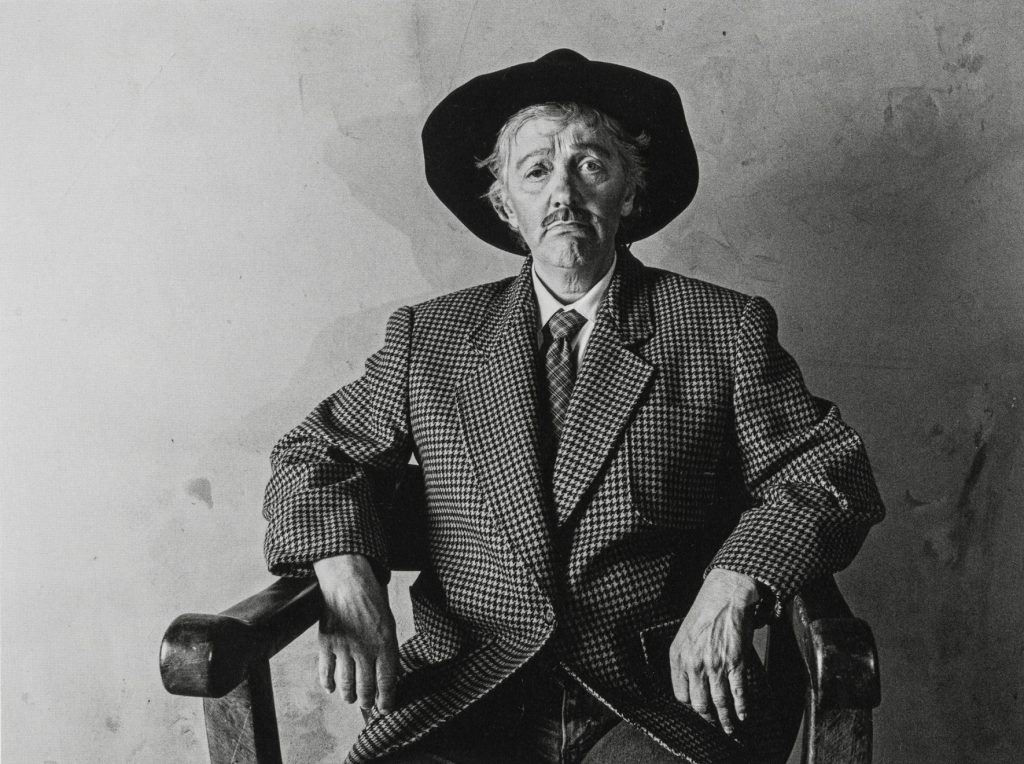
Scan of It is I, It is he, It is she; Homage to VDC (Van Deren Coke) (1986) from Flight of Spirit. Strawn, Martha A., and Lili Corbus Bezner. Flight of Spirit: The Photographs of Anne Noggle. Museum of New Mexico Press, 2019.
In the foreword to Silver Lining: Photographs by Anne Noggle (1983), Coke commented on Noggle’s artwork, “Her pictures convey a sense of intimacy – the intimacy of intense thought. She makes us use our heads and hearts, not just our eyes, when we look at pictures of people.” [1] The “intimacy” and “thought” that Coke speaks of are prevalent in two works by Noggle displayed in Hindsight Insight 2.0; Facelift #3 (1975), and Myself, 7am (1977).
In these two photographs, Noggle uses herself as the subject. Both self-portraits discuss Noggle’s inherent femininity as she documents women who are “rarely seen but are all around.” [2]
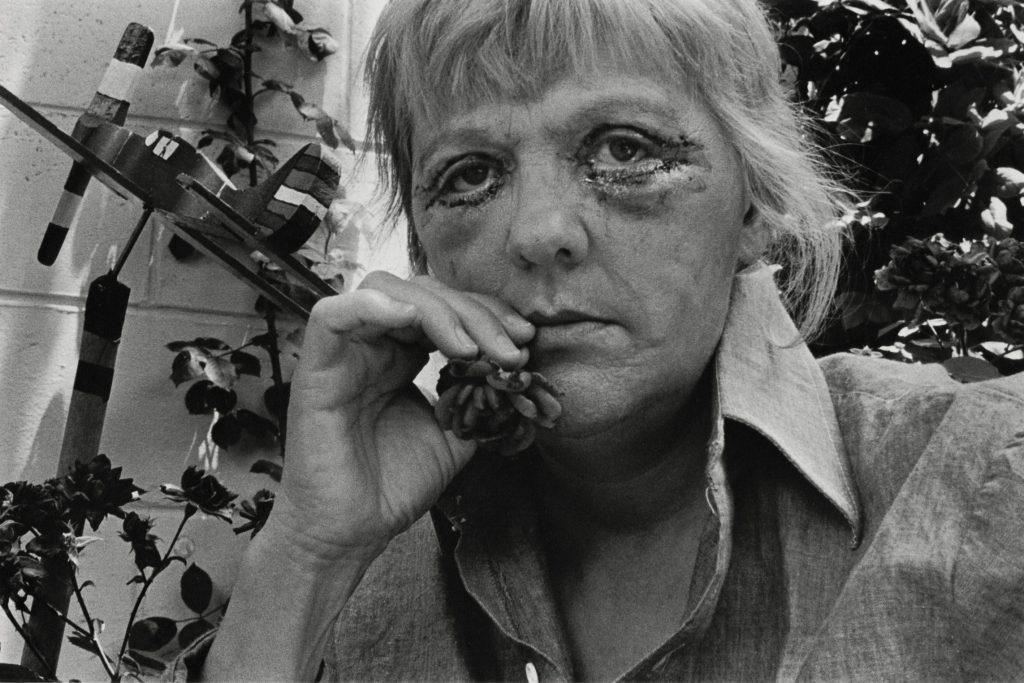
Scan of Facelift #3 (1975) from Silver Lining. Noggle, Anne, Janice Zita Grover, and Van Deren Coke. Silver Lining: Photographs by Anne Noggle. University of New Mexico Press, 1983.
In Facelift #3 (1975), the artist directs attention to her own face as she recovers from plastic surgery. In this black and white photograph, she places herself in a domestic garden in front of a toy-like wooden airplane, playfully recalling her youth as a WASP pilot. She holds one small flower, collected from the blooming bush behind her. Her engagement with the flower suggests to the viewer ideas of femininity. In Facelift #3, Noggle documents her recovery from a procedure that is often regarded as private, in a time where women often kept themselves out of sight until fully healed. Instead, she embraces this vulnerable and ephemeral state of her body, like her relationship with age, and makes it visible.
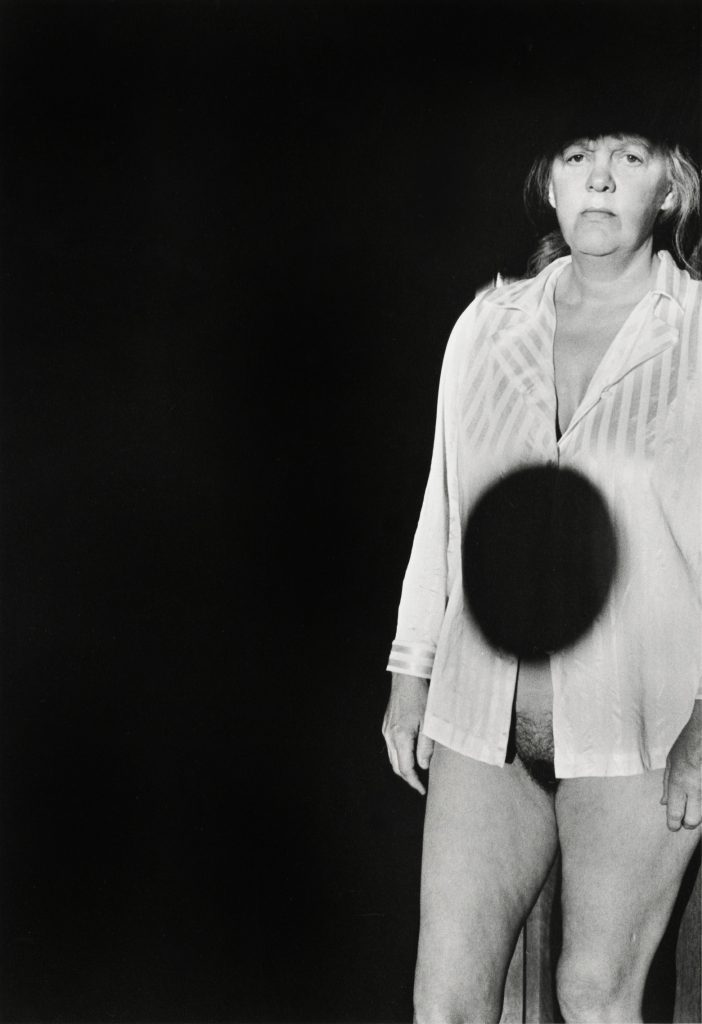
Scan of Myself, 7am (1977) from Silver Linings. Noggle, Anne, Janice Zita Grover, and Van Deren Coke. Silver Lining: Photographs by Anne Noggle. University of New Mexico Press, 1983.
While Noggle grapples with her unique experience with aging in her own work, she also challenges the viewer’s preconceived ideas about aging. In Myself, 7 am (1977) Noggle stands on the far-right side of the composition, slightly out of frame, facing towards the viewer in a dark setting. Most of her body is illuminated by morning light except for the top of her head and a large circular shadow cast on her lower torso. Noggle suggests absence through the placement of the circular shadow surrounding her abdomen. “The round, dark shape marks the location of the generative process, the symbolic centre of will and motivation. Although the shadow defines what makes her a woman, it is the negative space of what has been.” [3] In this black-and-white photograph Noggle plays with light and shadow, using light to define and shadow to erase the portions of herself that have its significance defined by society.
Facelift #3 and Myself, 7am were not the only photographs by Noggle on display in Hindsight Insight 2.0. But these two pieces specifically highlight a larger aspect of Noggle’s work, being “Noggle’s work is not easy to categorize; she challenges conventions ironically, she lampoons and parodies, she stages and opposes … many of her images complement postmodern examinations of privilege, power, and identity.” [4] Noggle’s artwork and her curious nature were once again on display within UNMAM, engaging our audiences, and asking them to reflect on constructs of self-identity and gender. As women’s rights in the United States are under scrutiny and actively being repealed, we can look towards Noggle’s work as a call to action, and a documentation of the shifting constructs of gender and aging.
Scans from Silver Linings. Noggle, Anne, Janice Zita Grover, and Van Deren Coke. Silver Lining: Photographs by Anne Noggle. University of New Mexico Press, 1983.
The current iteration of Hindsight/Insight 2.0 will be on view till July 29th. After which, the exhibition, along with the works of Noggle, can be found by visiting our Virtual Exhibitions page.
1 – Noggle, Anne, Janice Zita Grover, and Van Deren Coke. “Silver Lining: Photographs by Anne Noggle.” University of New Mexico Press, 1983.
2 – Gutsche, Clara. “The Photographs of Anne Noggle: The Tragedy Fallen Flesh.” Photo Communique 2, No. 3 (Fall 1983), 9.
3 – Gutsche, Clara. “The Photographs of Anne Noggle: The Tragedy Fallen Flesh.” Photo Communique 2, No. 3 (Fall 1983), 14.
4 – Strawn, Martha A., and Lili Corbus Bezner. “Flight of Spirit: The Photographs of Anne Noggle.” 137. Museum of New Mexico Press, 2019.

